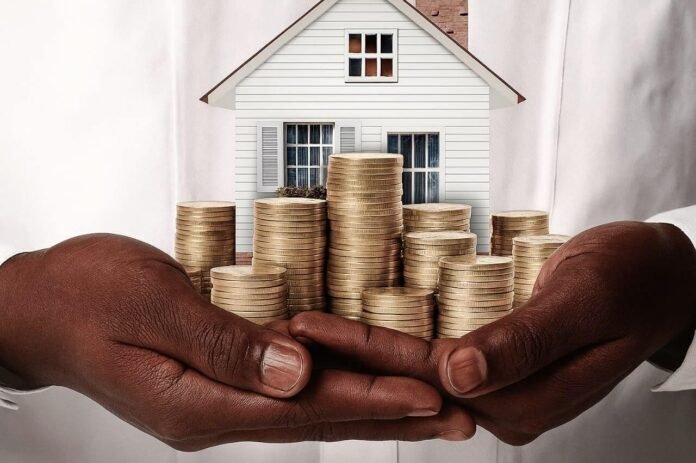JOHANNESBURG – In a decision both welcomed and questioned, the South African Reserve Bank (SARB) announced a 25 basis point reduction in the repo rate, bringing it down from 7.25% to 7%—its lowest level since the Covid-19 pandemic. The prime lending rate now sits at 10.50%.
The decision was unanimous among the Monetary Policy Committee (MPC), reflecting cautious optimism as inflation remains contained and global economic pressures mount.
“The move provides much-needed relief for South African households, many of whom continue to face financial pressure due to the rising cost of living,” said acting government spokesperson Nomonde Mnukwa.
“The decision reaffirms the soundness of South Africa’s monetary policy framework and the importance of co-ordinated efforts to support inclusive growth.”
A breather for the overburdened
South Africans are paying more for just about everything—from food and electricity to transport and credit. While inflation remained within the SARB’s 3–6% target range at 3.0% in June, real wage growth has stagnated, and unemployment remains alarmingly high.
“It’s certainly great that the financial pressure on households will ease slightly in the short term,” said Yael Geffen, CEO of Lew Geffen Sotheby’s International Realty.
“On a R2 million bond, monthly repayments will go down by just below R340 a month, but we’re on the precipice of an economic disaster.”
Even modest cuts make a difference in such a precarious context, particularly for middle-income households carrying large home loans or vehicle finance debt.
Consumer confidence: A dlicker, not a flame
“A lower interest rate environment gives consumers a bit of breathing room,” said Craig Mott, National Sales Manager at Rawson Property Group. “It may not be a major cut, but in today’s market, even a small reduction helps – and it boosts confidence.”
Confidence is key. According to Quay 1 International Realty, buyer activity is already responding positively, especially in Cape Town where affordability remains a key barrier to homeownership.
“With the spring selling season approaching, we anticipate this rate cut will provide the perfect window for many aspiring homeowners to enter the Cape Town market,” said CEO Ryan Greeff.
“This adjustment will lower monthly bond repayments, freeing up disposable income and making homeownership more accessible.”
The structural strain remains
While the cut eases borrowing costs, it doesn’t fix the foundational cracks in the economy.
“We’re easing back when ours is circling the drain,” Geffen warned. “We have record unemployment, basic household costs such as electricity have risen by several hundred percent in recent years, and on average households are spending an alarming two thirds of their income servicing debt.”
The SARB’s careful pace reflects these realities. Global uncertainty—from ongoing trade friction with the United States to fluctuating commodity prices—continues to challenge growth forecasts. According to a recent Reuters poll, GDP is expected to grow only 1.2% in 2025.
Inflation in check—but for how long?
SARB Governor Lesetja Kganyago confirmed that recent positive data, particularly low inflation and some signs of economic recovery in Q2, justified the rate cut. However, he also hinted at looming risks.
“Global economic conditions remain uncertain amid the United States’ tariff push, while local conditions in South Africa remain under pressure,” Kganyago said.
The bank now aims to anchor inflation expectations at 3%, the lower end of its target band—a subtle but telling policy shift.
📌 Track current market rates here
Homeowners: Take advantage, but stay vigilant
Many in the property sector advise homeowners to use this reprieve wisely.
“Now’s a great time to take stock,” said Mott. “You could use the savings to pay down your bond faster or consider refinancing if your circumstances have improved.”
Adrian Goslett, Regional Director of REMAX Southern Africa, echoed the sentiment.
“This cut is likely to serve as a much-needed catalyst for transaction volumes, particularly in the affordable and mid-market sectors. The market is still price-sensitive, but this rate cut could re-energize interest in property acquisitions.”
Still, most experts caution: don’t expect miracles. The cut is too small to drive explosive growth, but it may help stimulate steady movement, particularly in the R1.5 million to R2.5 million property bracket.
Looking ahead: What comes next?
“Whilst the Cape Town market continues to boom, the KwaZulu-Natal market is holding firm. Johannesburg is seeing a slow but consistent recovery,” said Francois du Toit, Director at Tyson Properties.
However, with the possibility that this is the last cut in the current cycle, households may need to shift focus from spending to consolidating.
“Homeowners must tighten their purse strings to plug budget leaks and bring disposable income back to acceptable levels,” du Toit added.
📌 Explore previous relief efforts here
Key takeaways:
- Repo rate now at 7%; prime lending rate at 10.5%
- Bond repayments drop slightly – e.g., R337 on a R2 million bond
- Inflation remains controlled, but cost of living pressures persist
- Experts urge homeowners to optimise, not overspend
- Spring market could see uptick—but only among well-prepared buyers
While this repo rate cut offers some relief, it also reflects the SARB’s careful balancing act: easing pressure on struggling South Africans without fuelling unsustainable debt or inflation. For now, the message is clear—use the relief wisely, because the road ahead remains uncertain.

